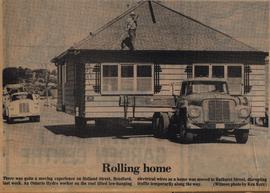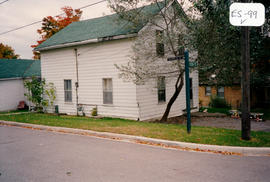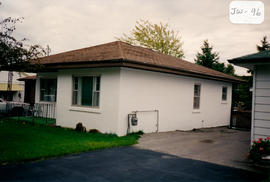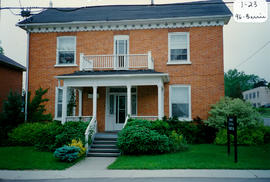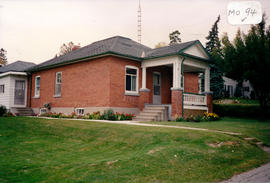The mid-block building located at 94 Moore Street was built in the 1920’s in the Ontario Vernacular Cottage style. It was once the home of the Simpkin family. George Simpkin was a plumber and electrician. His brother Robert was a policeman. On the Collings’ map, the Simpkin gardens ran from Frederick St. to James St. (along the west side of Moore Street). In later years, Mr. Simpkin built a new home on his south garden lot (at James Street).
The one-storey, three-bay ‘cottage’ has a symmetrical façade, a rectilinear plan, and a shallow-pitched, hip roof. There is a centre, hall entrance from a prominent, covered front porch. The open, front porch is raised and has a gable roof with a decorative, wood pediment. Its roof is supported on wood half columns on brick piers at the back of the porch, and triple wood posts on brick piers at the front. The porch is raised and has a turned-wood handrail and baluster. There are narrow window openings and narrow windows with low floor to ceiling heights set into segmented, arched openings with concrete lug sills. The house has wood frame construction with brick masonry cladding and a parged, concrete foundation. According to the 2000 inventory, the house is in good condition with many original features that have been maintained well. It also notes that the windows, pre-cast concrete porch stairs, and rear, one-storey addition are not original. (1, 2, 3)

